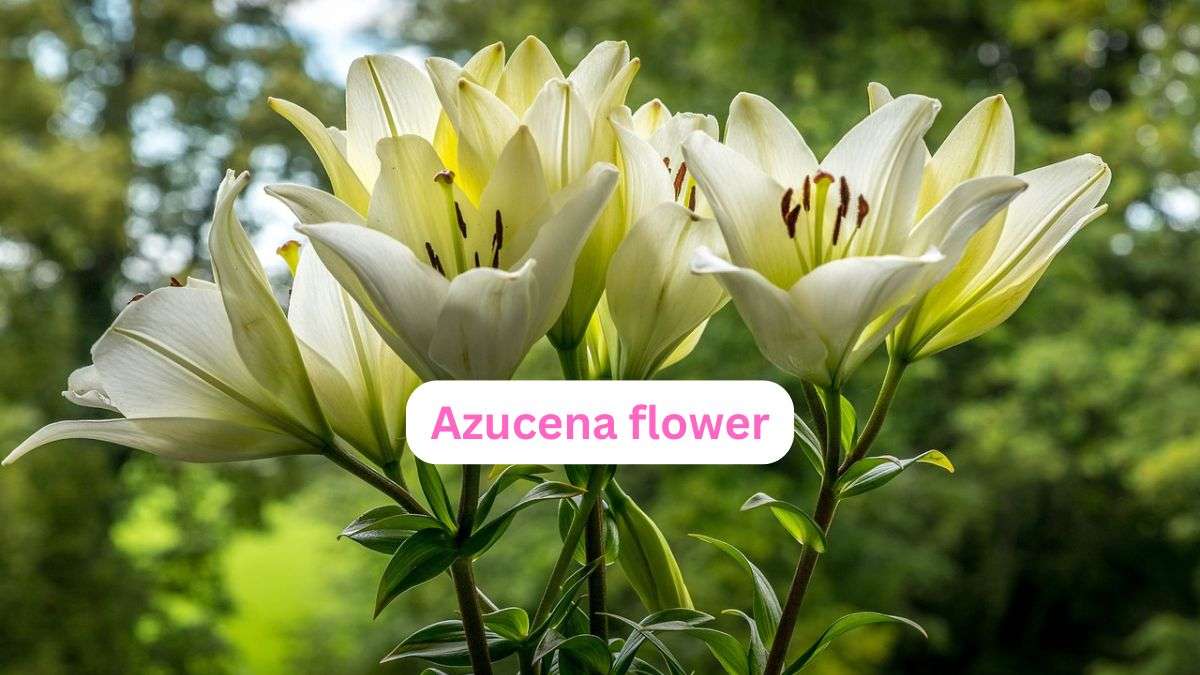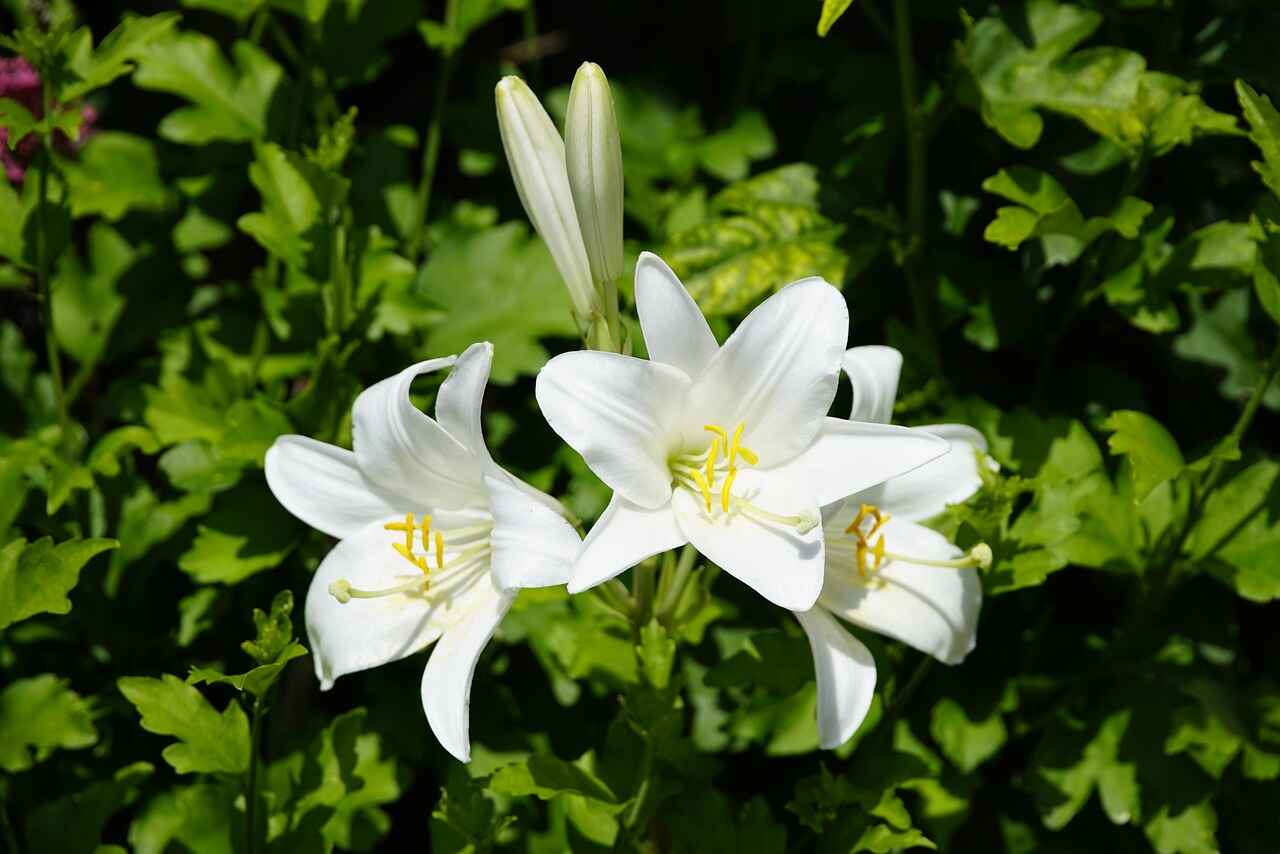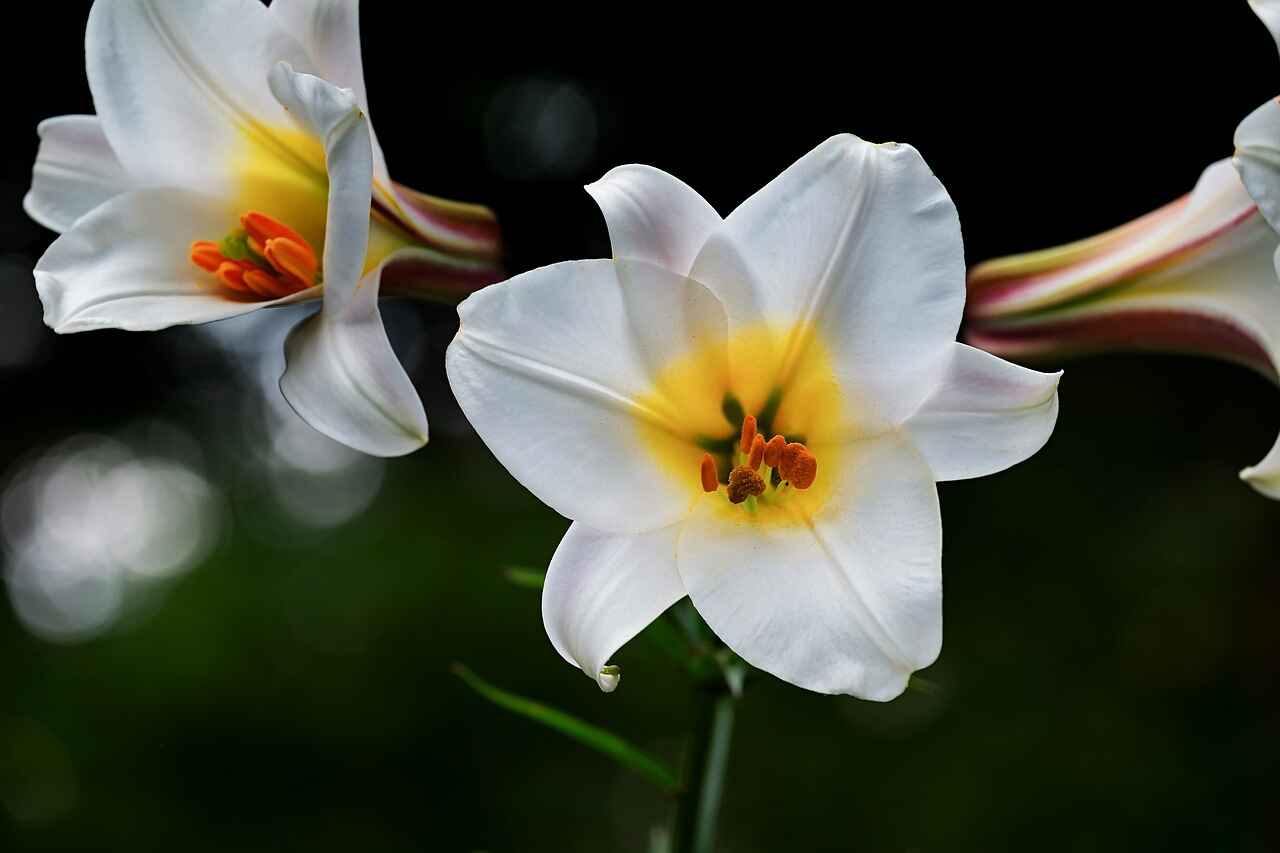The Azucena flower with fresh petals and a pleasing smell has been valued in art since ancient times in different civilizations. Lilium candidum, or the asusena flower, is important in gardens and religious activities and embodies folktales. We will look into how best to grow the beautiful Azucena flower, its deeper meaning, and its historical background in detail.

History of the Azucena Flower
The background of this flower can be traced back to the historical period, blended with civilization and myth. This elegant bloom originated in the Balkan Peninsula and the Middle East and has been cultivated for over 3,000 years. Some of the earliest cultures that have admired the beauty of the Azucena flower include the Minoans and the Ancient Egyptians, who used the flower in arts and rituals.
In medieval Europe, the Azucena flower was used wherever the Virgin Mary was referred to, symbolizing purity and divinity. Due to its connection with virtue, the flower was often cultivated in the gardens of monasteries and painted in religious art.
The fate of the flower in history has entailed its incorporation into different cultures. Thus, it was called Aspat or Zafarán in Persia, Espagnole or Zinziberre in France, Zinziberi in Italy, and Azucena in Spain and Latin America, originating from the Arabic Susan, which means lily. This name is attributed to the flower transfer through trade and how civilization integrates it into society.
What is an Azucena flower?
Azucena is a lily or Lilium plant, a perennial plant variation with a trumpet-shaped blossom commonly found in Southeast Asia. It has flower heads usually formed in clusters on well-developed stems, reaching a standard height of 4 feet. It is categorized that the flower has only a white petal, but some cultivars could have a soft pink or yellow coloration.
The other feature that characterizes the Azucena flower is its sweet-smelling nature. The fragrance of these flowers is sweet and intoxicating, and they can saturate an entire garden with their smell. That is why such flowers are highly valued by florists and people who use flowers and their scent in producing perfumes. Besides being an attractive floral ornament, the Azucena flower also has a fragrant smell, making it useful in aromatherapy and as a traditional healer.
The plant has lanceolate leaves, disposed in verticils along the stem. These leaves act as a wonderful green curtain that stops the eye from resting on the beautiful flowers. Azucena flowers usually bloom during spring and summer, adorning gardens with a hint of class and innovation at this beautiful time.

The Azucena Flower Meaning (Azucena name meaning)
Therefore, the existence of the flower azucena is still rich in cultures and meanings in different aspects and societies. They are elegant in form and white in color; in fact, lilies were being used in poems, paintings, and as symbols of heaven by early religious practitioners. This way, the Azucena flower meaning is enhanced, deepening its appreciation and cultivation.
The Azucena meaning remains a symbol of purity, innocence, and virtue, which is classified among many other Western cultures. The petals are white and without any blemish associated with a woman’s moral or spiritual purity. This association has made the flower special for events such as weddings and religious ceremonies because the coloring is seen as symbolic of the sacredness of the occasion.
Some traditions of the Oriental type, like the Azucena flower, embody the idea of rejuvenation. This is explained by the fact that flowers bloom every year, year after year, from their bulbs dormant during the winter, which yields the connotative effect of life’s renewals.
There are other aspects to do with the sweet smell of the flower that have helped give meaning to the flower. In the Florio graphy of today’s language of flowers, the Azucena possesses the virtues of purity and sweetness of character. It is said that the fragrance of it is relaxing, and thus, you find people adding it to their meditation gardens or rooms.
What does Azucena symbolize?
The symbolism of the Azucena flower is a rather complex phenomenon involving different aspects of life and people’s spiritual experiences.
1. Purity and innocence
The beautiful Azucena flower is symbolized by its white, which represents purity. According to the different cultures, white flowers are associated with pureness and sexual virtue. This kind of beauty is where the qualities mentioned can be precisely depicted, especially the Azucena with its luminous bloom.
Based on this symbolism, the Azucena plant is often used in religious events, specifically for spiritual cleaning or anointing rituals. According to some traditions, for example, in the Christian tradition, the flower symbol is attributed to the Virgin Mary, as it embraces the meaning of purity and divine blessing.
However, the above-mentioned religious purification association is not the only image represented by the Azucena flowers. In lay environments and all those that do not pertain to religion or spirituality, it depicts themes such as purity of childhood or affection. For this reason, it is used on occasions such as weddings, baptisms, and coming-of-age ceremonies.

2. Femininity and Motherhood
The shape of the flower is delicate, and in combination with the nurturing characteristics of the plant, it is associated with a female and maternal figure. It symbolizes the perennial phenomenon of bloom, which constantly offers beauty and a sweet scent to reflect maternal care and love, which are permanent virtues.
According to the different cultures of some regions, the Azucena flower is considered to have a symbolism linked to inferior feminine energy. Such aspects as its refined silhouette and delicate silky petals have connotations of what has long been regarded as female, namely elegance, loveliness, and tenderness.
Thus, the association of the flower with motherhood is strengthened by the fact that it plays a role in fertility ceremonies and other traditions. In some parts of the world, it has characteristics that are believed to help infertile women get pregnant as well as make childbirth safe.
3. Rebirth and Renewal
Undoubtedly, the most significant elements of the Azucena flower’s symbolism relate to rebirth and renewal. This symbolism is based on the plant’s life cycle; they are bulbous plants that grow and produce beautiful flowers in spring.
Because the Azucena flower blooms year in and year out, almost in defiance of the unfavorable conditions during the winter season, it is therefore regarded as a symbol of resilience and the cycle of life. In many cultures, it denotes a life conquering death and, in like manner, endlessly continuous regeneration.
Due to this symbolism of renewal, the Azucena flower is currently used in gardens to promote recovery and healing. Consequently, its presence can awaken the viewer’s consciousness about the ability of the Earth to heal and people to change.
How do you grow Azucena Flower
Growing the Azucena flower is relatively easy, and anyone who decides to grow the plant will be happy with the result. It is necessary to state that these plants are very strong, and it is relatively easy to care for them if specific conditions are provided. Here’s a comprehensive guide to growing your own Azucena flowers:
Soil Preparation:
Azucena flowers prefer good, drainable soil that is fertile. Several hours before planting, prepare the soil by adding compost or well-degraded manure. This will help properly arrange soil particles and provide the necessary nutrients for plant growth. The most suitable pH for the cut flowers of Azucena ranges between 6.0 and 7.0.
Planting:
It is recommended that Azucena flower bulbs be planted in the fall season, ideally 6–8 weeks after the first frost. Grow in full sun to partial shade, meaning the area should have full sunlight during the morning but shade during the afternoon. Bury the bulbs 4-6 inches deep and allow for 12 inches between the bulbs planted in the ground.
Watering:
Azucena flowers need the soil to be moist all the time, but at the same time, it should not be soggy. It is recommended that vine plants be watered once a week with deep water that does not cause the soil to drench. In the summer, especially when the weather is very dry, you may need to water more often.

What is Azucena flower in English
In Spanish, the flower called “Azucena” is simply known as the “Madonna Lily” in English. The Madonna Lily is a lovely, sweet-smelling white flower with trumpet-shaped petals. It’s often seen as a symbol of purity and goodness.
Azucena flower Tattoo
An azucena flower tattoo is a lovely picture you can put on your skin. The Azucena flower, also known as the Madonna Lily, stands for being pure and beautiful. It has pretty white petals that look like a star and smell nice.
Choosing the Azucena tattoo shows you what the flower means. It stands for being innocent, hopeful, and having a fresh start. When people look at it, they might think about starting something new and how life can be beautiful.
You can put lily drawing on different parts of your body, like your arm, wrist, or back. Some folks might pick a small design, while others might choose a bigger, more detailed one.
But before you get a tattoo, you should think about it a lot and be sure you want it. Tattoos stay forever, so make sure you’ll like what the Azucenas flower symbolizes for a long time. When you’re sure, find a good tattoo artist who can make the delicate beauty of the Azucena flower come alive on your skin.
Conclusion
The beauty of the Azucena flower and the story behind the flower are loved by gardeners, artists, and many devotees of nature worldwide. Since this flower was first found to cross-pollinate up to today’s cultivation, it has become part of our traditions and religions.
It doesn’t matter whether one decides to grow these flowers for symbolism, the intensive beauty, or the fragrance of the Asucena flower; the endeavor is bound to be one of the most satisfying. When you take care of your Azucena flowers, you are beautifying your garden and associated with a plant with a history that dates back to the age of the Pharaohs.
Read also:


